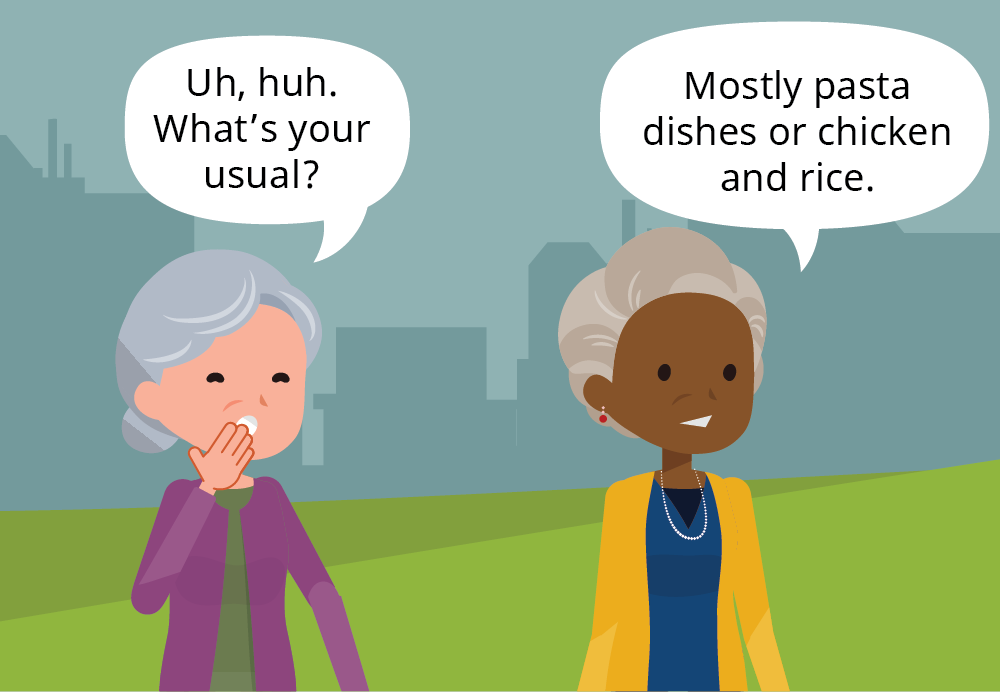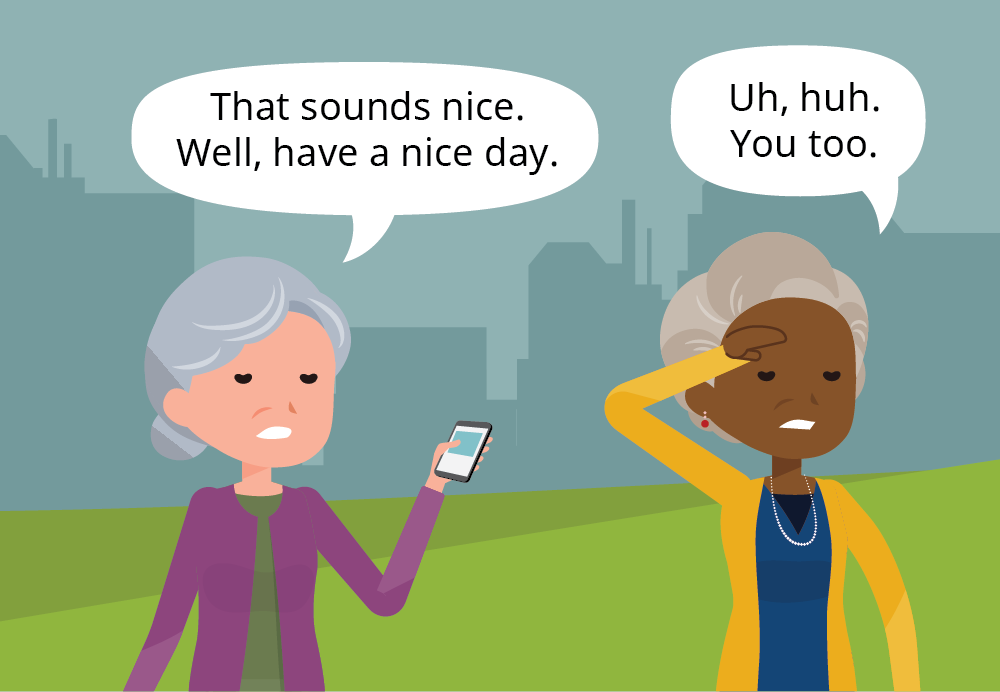Click to play audio. Listening time: 2 minutes
Learning how to be an active listener can make having conversations easier and lead to deeper connections with the people in your life.
Not sure what “active listening” means? Review this refresher first to learn simple techniques for keeping your conversations flowing naturally.
Being a good active listener takes a bit of practice. But once you get the hang of it, it’s amazing how much more at ease you feel when talking with other people.
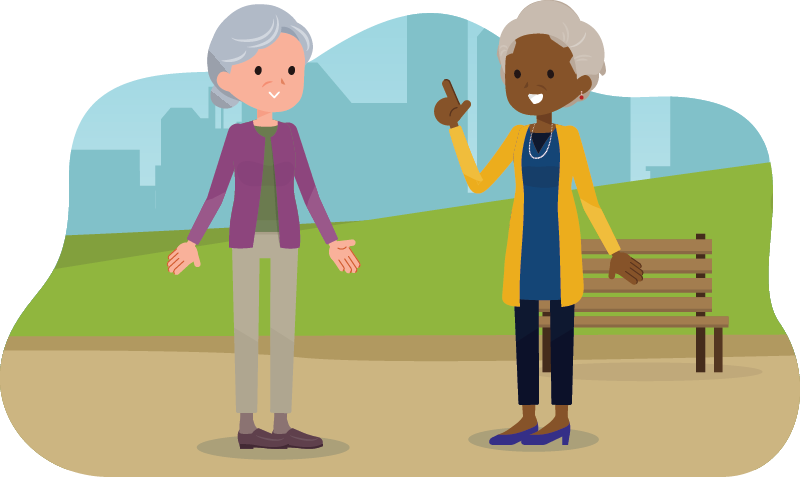
Active Listening Skills
- Making eye contact
- Focusing my attention
- Watching my body language
- Offering encouragement
- Not interrupting
- Paraphrasing what’s being said
- Asking questions that show my interest
- Asking questions so I understand what’s being said
- Remaining non-judgmental
Activity
This quick exercise can help you understand which of the following skills you may need to focus on to make active listening more of an everyday habit.
- Can you think of a time when someone made you feel listened to? Did you notice them using active listening?
- Can you think of a time when you didn’t feel listened to? What did you notice about that conversation? Did you feel interrupted? Uncomfortable?
- Reflect on your own conversation style. Which active listening skills do you struggle with? Which do you do well with?
- Can you think of an instance where you froze and forgot to use active listening? Which techniques above could you have used?
- Learning active listening takes practice. Commit to practicing that skill in your conversations. Think of or jot down three ideas for finding people to talk with.
A Conversation Where Both People Use Active Listening
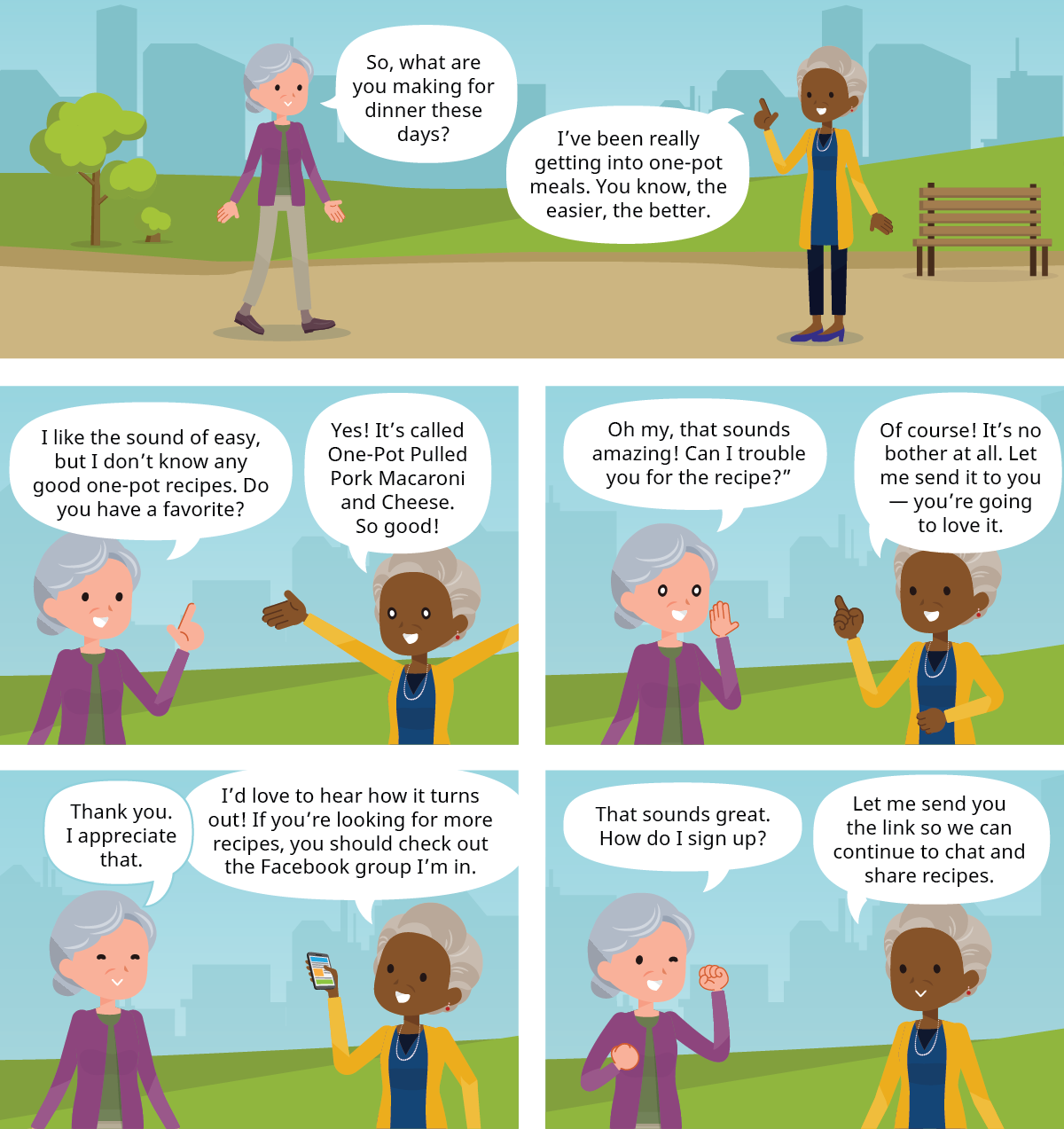
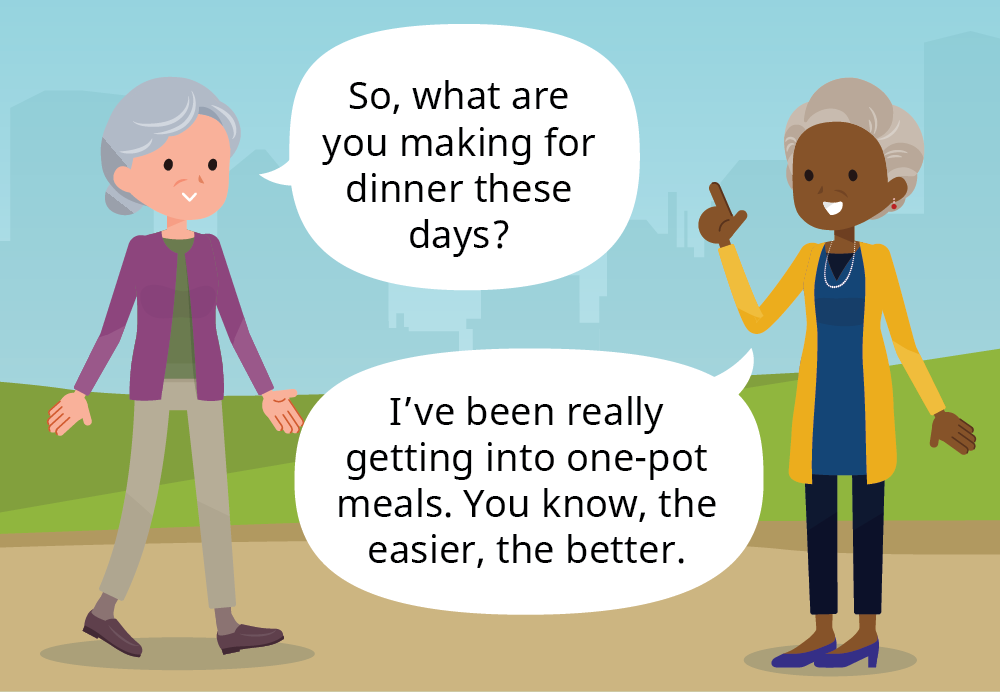

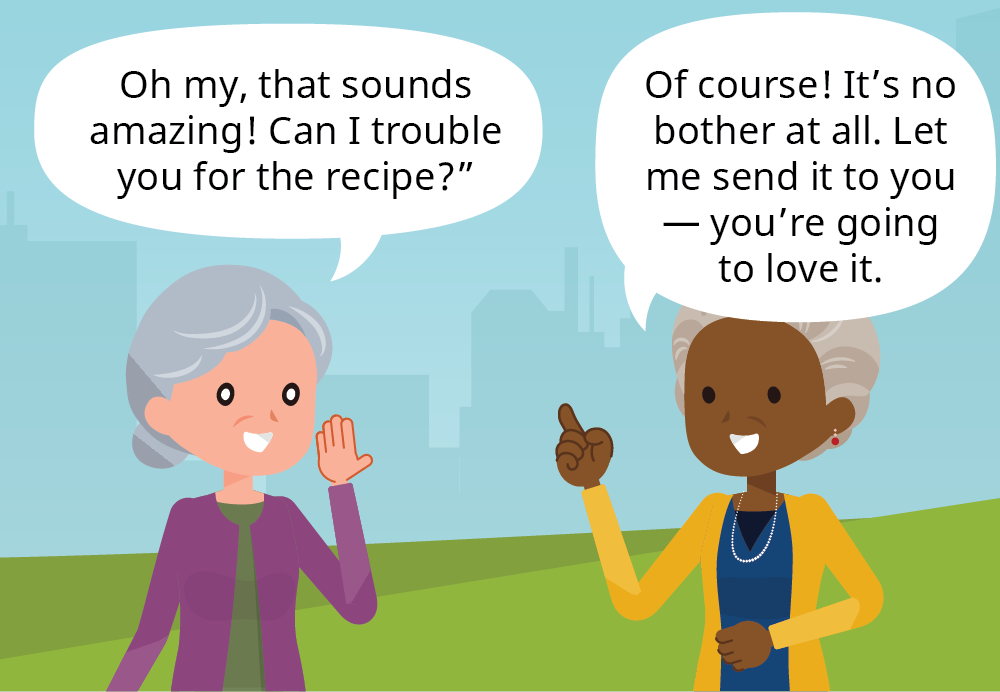


A Conversation Where Neither Person Uses Active Listening


